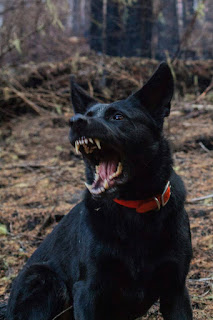The Art of Loose-Leash Walking: Click, Treat, and Enjoy!
Ever been on a walk that turned into a wrestling match because your dog wouldn't stop pulling? The most common question I get is, "How can I get my dog to stop pulling?" Well, let's tackle this challenging topic together with a bit of heart and a touch of mindfulness.
In addition to loose-leash training, decompression walks play an important role in providing mental and emotional relief for our dogs. These walks, focused on allowing our pets to explore freely, contribute to their mental stimulation and overall well-being. So while teaching our dog to walk with a loose-leash is important, I only recommend using this skill in areas where you need to keep your dog on a shorter leash for their safety and to comply with leash laws.
General Idea
What I aim for is to make it fun for our dog to keep their leash loose. I’m always trying to make it a game so they are fully engaged. I want you to consider the below steps like a recipe; it’s okay to deviate from this guide depending on your dog's needs.
Simple Steps for Loose-Leash Walking
Setting: Make sure to start in a quiet, distraction-free environment. This will help your dog focus on you. Once they have mastered the behavior, you will start gradually adding distractions and working up to taking it outside. Loose-leash walking is one of the hardest things for a dog that loves to pull, so I aim to make it as easy as possible for them to succeed in the beginning.
Step 1: Stand Still
Start with your dog off-leash and stay stationary. Wait for your dog to come over to you. As soon as they do, click and toss the treat 3 feet away on the floor. When your dog is enthusiastically coming over, move on to step 2.
Step 2: Eye Contact
Click and treat for eye contact. Click and now drop the treat at your feet. Aim for a fast rate of repetition here by clicking the instant they make eye contact and then trying to deliver the treat 1-2 seconds later.
Training While On the Move
Step 1: Start walking
Start walking forward slowly; as soon as your dog takes a step forward to follow you, click and toss a treat past their nose. Click and treat when they come back to you. Once your dog is giving you solid eye contact, repeat this step.
Step 2: Take Controlled Steps
Walk forward and wait until your dog is walking beside you. Click and drop a treat at your feet to avoid them rushing ahead and keep walking on slowly. When your dog catches up to you again, repeat the process. Gradually increase the steps in between clicks.
Additional Pro Tips
Keep it quick for a Happy Pooch:
Aim for 10 clicks/minute to maintain a high rate of reinforcement. This will keep your dog engaged and having fun because they are getting lots of good things. Keeping it easy and gradually making it more difficult will help prevent frustration. And remember, if you or your dog is getting frustrated, end the training session on a high note, and when you come back to training, make it easier for them by going back a step.
Gradually Increase the Difficulty:
Once you are feeling really good about the behavior in a calm distraction-free environment, gradually increase the difficulty. For example, if you were training in a room with the curtains closed, try opening them. I like to quickly run through all of the steps again, doing 1 or 2 repetitions each. This will help your dog generalize the behavior to more difficult situations.
Mix it up and Starting with a Leash:
As your dog gets better, mix up the rewards by using a variety of high-value treats. Let them know good stuff happens closer to you. When you start using a leash, I recommend starting with a long one to ensure the leash remains loose. Once they have mastered the behavior with a long lead, start with your shorter 6ft leash.
If you can successfully teach your dog to walk on a loose lead with this method, you will be making walks more enjoyable for both of you. You're not just mastering walks; you're giving your pup a longer, healthier life!


Comments
Post a Comment